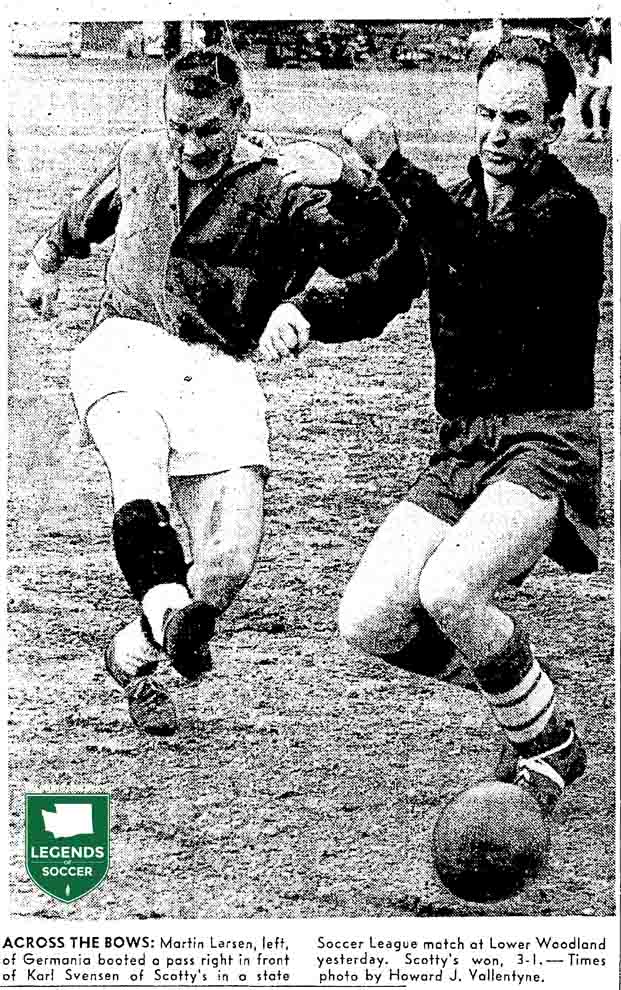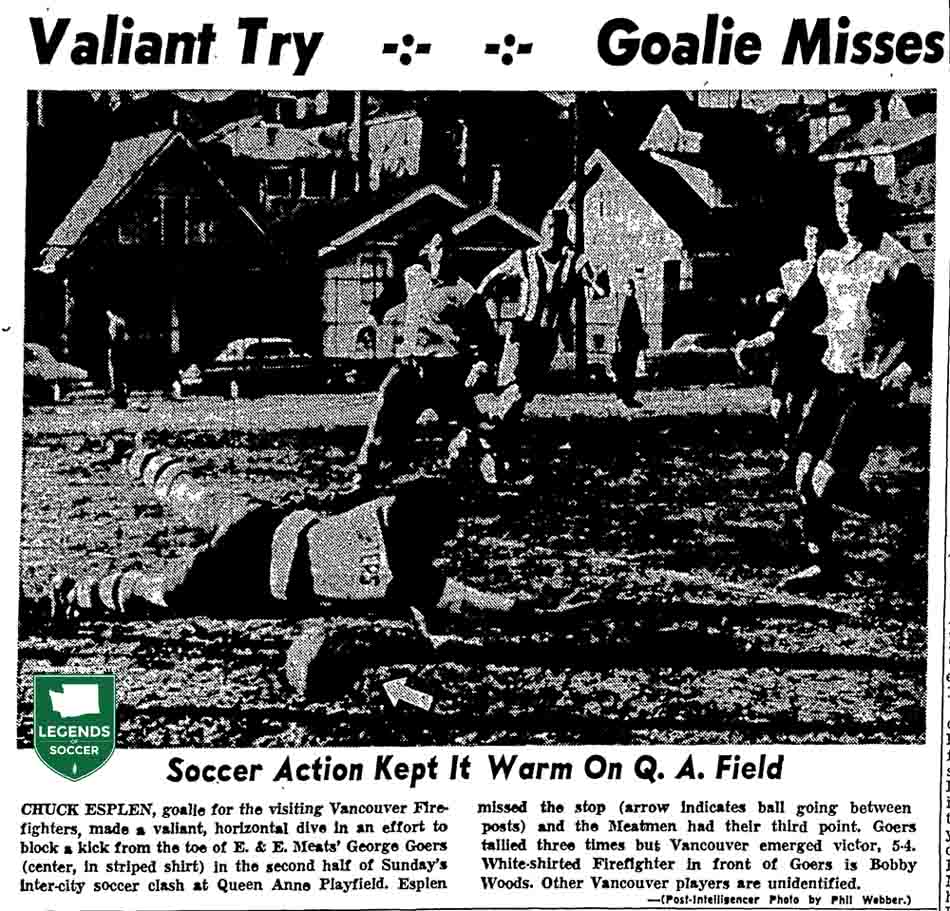1958 – Around the World and Close to Home
The U.S. Supreme Court rules unanimously that schools must integrate. Transatlantic passenger jet travel begins between New York and both London and Rome. Manchester United's team plane crashes in Munich, killing 23. Major League Baseball reaches the West Coast, with the Dodgers and Giants leaving New York. Elvis Presley, who had sold 40 million records by age 23, is inducted into the U.S. Army. In Washington, Richland votes to become an incorporated city after being entirely government owned since 1943. Elgin Baylor leads Seattle University to the NCAA Final Four. Following public outcry, state officials agree to give Native American names to two new ferries, the Klahowya (meaning greetings) and Tillikum (friends).
The Huskies’ Humble Beginnings
Perhaps John Zavaglia saw something of himself or certainly his own immigrant family when he first laid eyes on his new assignment. The young men arriving that evening at Seattle’s Beacon Hill Playfield had very little in common with one another, except their age and their passion for playing football. Only here, in the nation where they came to study, it was known as soccer.
A few days earlier, Zavaglia had been a captive audience to his dentist. While having a crown installed on a tooth, he listened as his dentist shared the story of the Husky Soccer Club. It was a collection of international students attending the University of Washington, and they were playing in the State League on Sundays. But according to Dr. Rogers, they weren’t maximizing their talents they weren’t playing together.
Zavaglia, the fortysomething son of an Italian immigrant, was intrigued. Born in Black Diamond, the early-century hotbed of local soccer, he had taken to the game, as well as baseball, at a young age. He played for Boeing’s State League entry and had successfully coached the boys’ CYO team at St. George School, a couple miles away, also on Beacon Hill.
It’s doubtful that the Husky SC had designs on vying for trophies. After all, they were playing in the shadow of established clubs such as the Vikings and Buchan Bakers, plus the emerging Hungarians.
“They were just a good, fun-loving group,” recalled John Zavaglia, the coach’s son, decades later. “They were from all over the world, foreign exchange students. The problem was that they were all individualists. They each had their own style they didn’t play well or gel as a team.” As their coach, John Zavaglia hoped to change that.
College soccer in the late Fifties was about to experience a growth spurt. Varsity play had expanded west of St. Louis to California and then Colorado. As the NCAA announced plans to initiate championship play in 1959, Husky SC was effectively the seedling that would grow to a towering evergreen in following decades. It was partially funded by the Visiting International Students’ Association, which represented approximately 500 students on campus. Husky SC had played under the VISA flag beginning in 1957-58 and would continue on through to the establishment of a UW varsity program.
Much like the first few editions of the UW varsity to come, Husky SC was comprised of students hailing primarily from Europe and Africa. John Nketiah and Emmanuel Kwapong, both of Ghana, possessed dazzling attacking abilities. Alex Fry, the goalkeeper, was the lone local. One player who preferred to avoid attention would go on to contribute greatly to both the Huskies’ heritage and the greater Seattle community.
Dick Aguirre, who grew up around the game in southern California, was becoming a key contributor to Jim Owens’s UW football team. Aguirre started at tight end on Washington’s Rose Bowl-winning teams in 1960 and ’61 and was a fullback for Husky SC.
“Dick was chiseled, in perfect shape and said he wanted to stay in shape during the offseason,” explained Joe Zavaglia, who often tagged along with his dad to practices. Aguirre wanted his participation to remain under the radar to coach Owens, however. “It was all hush-hush because he was doing this on his own, on the side.”
Aguirre would later introduce himself as Ricardo and a Chicano. In 1972 he joined other activists in occupying the abandoned Beacon Hill School, a few blocks south of that playfield, demanding that the building be converted into a community center that served Latinos. City officials eventually gave in, and El Centro de la Raza – The Center for the People of All Races – was created. Aguirre became a founding member of the nonprofit and would serve there for more than 40 years, becoming well-known to youth for his regular visits to neighboring schools.
John Zavaglia and Ricardo (Dick) Aguirre: sons of immigrants who endeavored to make other immigrants to Washington feel at home.
 1957
1957


